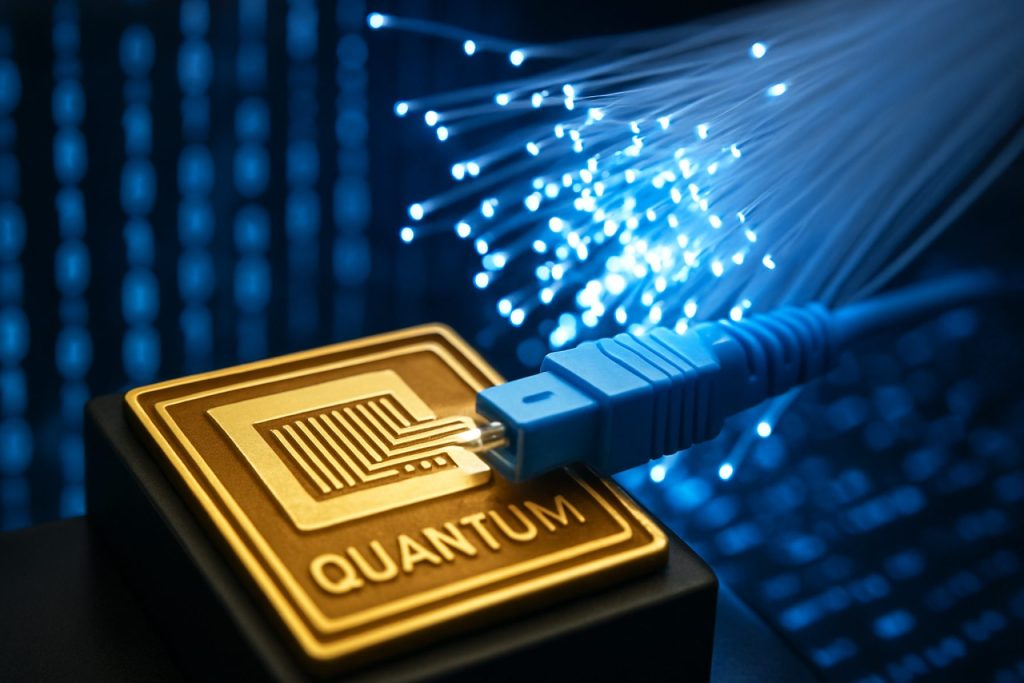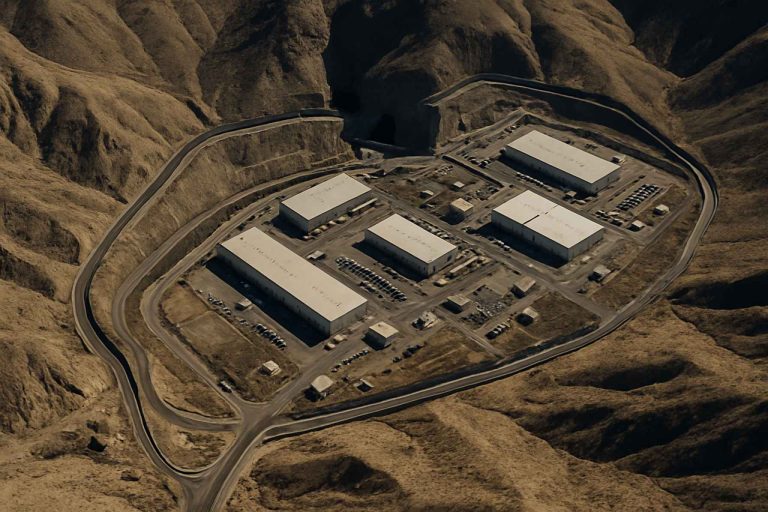
Quantum Secure Communications (QSC) Systems in 2025: How Quantum Tech is Redefining Data Security and Driving Explosive Market Growth. Explore the Innovations, Challenges, and Opportunities Shaping the Next Era of Secure Connectivity.
- Executive Summary: Quantum Security at a Tipping Point
- Market Size & 2025–2030 Growth Forecasts (30%+ CAGR)
- Core Technologies: QKD, Quantum Randomness, and Post-Quantum Cryptography
- Key Industry Players and Strategic Partnerships
- Deployment Trends: Telecom, Finance, and Government Adoption
- Regulatory Landscape and Global Standards (e.g., ETSI, IEEE)
- Barriers to Scale: Cost, Integration, and Talent Gaps
- Case Studies: Real-World QSC Deployments (e.g., ID Quantique, Toshiba, quantum-safe.com)
- Competitive Landscape: Startups vs. Established Tech Giants
- Future Outlook: Quantum Networks, Satellite QSC, and Next-Gen Applications
- Sources & References
Executive Summary: Quantum Security at a Tipping Point
Quantum Secure Communications (QSC) systems are rapidly transitioning from research prototypes to early-stage commercial deployments, marking a pivotal moment for quantum security in 2025. These systems leverage the principles of quantum mechanics—most notably quantum key distribution (QKD)—to provide theoretically unbreakable encryption, addressing the looming threat posed by quantum computers to classical cryptography. The urgency for QSC adoption is underscored by the accelerating progress in quantum computing hardware, with leading technology companies and national agencies warning that current public-key infrastructure could be rendered obsolete within the next decade.
In 2025, several countries and industry leaders are actively piloting and scaling QSC networks. China remains at the forefront, with QuantumCTek and China Science and Technology Network operating extensive metropolitan and intercity QKD networks, including the Beijing-Shanghai backbone, which spans over 2,000 kilometers. In Europe, the Deutsche Telekom AG and Orange S.A. are collaborating on cross-border QKD trials, while the European Union’s EuroQCI initiative aims to establish a pan-European quantum communication infrastructure by the late 2020s. In the United States, AT&T Inc. and IBM Corporation are engaged in government-backed pilots, focusing on integrating QSC with existing fiber networks and exploring satellite-based QKD.
Commercialization is accelerating, with vendors such as ID Quantique (Switzerland) and Toshiba Corporation (Japan) offering QKD hardware and managed services to financial institutions, government agencies, and critical infrastructure operators. These deployments are often hybrid, combining quantum and post-quantum cryptography to ensure both immediate and future-proof security. Notably, BT Group plc in the UK has launched quantum-secured metro links for enterprise customers, signaling growing market readiness.
Looking ahead, the outlook for QSC systems is shaped by ongoing standardization efforts, such as those led by the European Telecommunications Standards Institute (ETSI) and the International Telecommunication Union (ITU), which are expected to accelerate interoperability and drive down costs. As quantum computing advances, regulatory mandates and supply chain requirements for quantum-safe communications are anticipated to proliferate, making QSC a critical pillar of cybersecurity strategies worldwide. The next few years will likely see a shift from pilot projects to broader adoption, particularly in sectors with high-value data and stringent compliance needs.
Market Size & 2025–2030 Growth Forecasts (30%+ CAGR)
Quantum Secure Communications (QSC) systems, leveraging quantum key distribution (QKD) and quantum-resistant cryptography, are rapidly transitioning from research to commercial deployment. As of 2025, the global QSC market is experiencing robust growth, driven by escalating concerns over quantum computing’s threat to classical encryption and increasing regulatory focus on data security. The sector is projected to sustain a compound annual growth rate (CAGR) exceeding 30% through 2030, as governments, financial institutions, and critical infrastructure operators accelerate adoption.
Key players in the QSC ecosystem include Toshiba Corporation, which has established itself as a leader in QKD hardware and network solutions, and ID Quantique, a Swiss company recognized for its commercial QKD systems and quantum random number generators. BT Group in the UK has been actively piloting quantum-secure networks in partnership with technology providers, while China Telecom and China Mobile are rolling out QSC infrastructure across major Chinese cities, supported by government initiatives.
In 2025, the market is characterized by a surge in pilot projects and early commercial deployments. For example, Toshiba Corporation has launched QKD-secured metro networks in the UK and Japan, targeting financial and governmental clients. ID Quantique has expanded its QKD deployments in Europe and Asia, collaborating with telecom operators to integrate quantum security into existing fiber networks. Meanwhile, China Telecom is scaling up its quantum backbone, connecting multiple cities with QKD links as part of the national quantum communication infrastructure.
The outlook for 2025–2030 is shaped by several factors:
- Government funding and national security mandates are accelerating QSC adoption, particularly in China, the EU, and the US.
- Telecom operators are integrating QKD into their service portfolios, anticipating demand from banking, defense, and healthcare sectors.
- Standardization efforts, led by organizations such as the European Telecommunications Standards Institute (ETSI), are expected to facilitate interoperability and broader market uptake.
- Technological advances are reducing the cost and complexity of QSC systems, making them accessible to a wider range of enterprises.
By 2030, the QSC market is expected to be a multi-billion-dollar sector, with widespread deployment in metropolitan and intercity networks. The anticipated 30%+ CAGR reflects both the urgency of quantum-safe security and the maturation of enabling technologies, positioning QSC as a cornerstone of next-generation secure communications.
Core Technologies: QKD, Quantum Randomness, and Post-Quantum Cryptography
Quantum Secure Communications (QSC) systems are rapidly advancing as organizations worldwide prepare for the era of quantum computing, which threatens to undermine classical cryptographic protocols. The core technologies underpinning QSC—Quantum Key Distribution (QKD), quantum random number generation (QRNG), and post-quantum cryptography (PQC)—are now moving from research to deployment, with significant milestones expected in 2025 and the following years.
QKD remains the flagship technology for QSC, leveraging quantum mechanics to enable the secure exchange of cryptographic keys. In 2025, several national and cross-border QKD networks are operational or in advanced stages of deployment. For example, Toshiba Corporation has commercialized QKD systems and is collaborating with telecom operators to integrate QKD into existing fiber networks, targeting financial institutions and government agencies. Similarly, ID Quantique, a Swiss pioneer, continues to expand its QKD product line, with deployments in Europe and Asia, and is working with partners to develop metropolitan and backbone QKD networks.
China remains a global leader, with China Science and Technology Network (CSTNET) and China Telecom supporting the world’s largest QKD backbone, spanning thousands of kilometers and connecting major cities. These efforts are complemented by satellite-based QKD demonstrations, with Chinese Academy of Sciences continuing to operate the Micius satellite for intercontinental quantum communication experiments.
Quantum random number generators (QRNGs) are another critical component, providing true randomness for cryptographic keys. Quantum Engineering Programme (QEP) in Singapore and Quantinuum (a merger of Honeywell Quantum Solutions and Cambridge Quantum) are among the organizations commercializing QRNG modules for integration into secure communication devices and data centers.
Post-quantum cryptography (PQC) is also gaining traction as a software-based complement to QKD. In 2025, industry adoption is accelerating, with IBM and Thales Group integrating PQC algorithms into their security products, anticipating new standards from bodies such as the National Institute of Standards and Technology (NIST). These algorithms are designed to resist attacks from both classical and quantum computers, ensuring long-term data security.
Looking ahead, the convergence of QKD, QRNG, and PQC is expected to define the next generation of QSC systems. Hybrid solutions, combining quantum and post-quantum technologies, are being piloted by major telecoms and infrastructure providers. As costs decrease and interoperability improves, QSC is poised to become a foundational layer for critical infrastructure, financial services, and government communications worldwide.
Key Industry Players and Strategic Partnerships
The landscape of Quantum Secure Communications (QSC) systems in 2025 is defined by a dynamic interplay of established technology giants, specialized quantum startups, and strategic alliances that bridge research, infrastructure, and commercialization. As quantum threats to classical encryption become more imminent, industry leaders are accelerating the deployment of quantum key distribution (QKD) and post-quantum cryptography solutions, often through high-profile partnerships.
Among the most prominent players, Toshiba Corporation continues to lead in QKD system development, leveraging decades of research and a robust patent portfolio. In 2024, Toshiba announced the expansion of its QKD network trials in the UK and Japan, collaborating with telecom operators and government agencies to demonstrate secure data transmission over metropolitan and intercity fiber networks. Similarly, ID Quantique, headquartered in Switzerland, remains a pioneer in commercial QKD products, supplying quantum random number generators and end-to-end encryption solutions to financial institutions and government clients worldwide.
China’s China Electronics Technology Group Corporation (CETC) is a key driver of national-scale QSC infrastructure, having deployed the world’s longest QKD backbone between Beijing and Shanghai. CETC’s ongoing projects in 2025 include expanding quantum-secured communication links to additional cities and integrating satellite-based QKD, building on the success of the Micius satellite missions. In Europe, Deutsche Telekom AG and Orange S.A. are actively piloting QSC services for enterprise customers, often in partnership with quantum technology startups and research consortia.
Strategic partnerships are central to the sector’s progress. For example, BT Group plc has partnered with Toshiba Corporation and UK government agencies to build a quantum-secured metro network in London, with plans for commercial rollout in 2025. In the United States, AT&T Inc. and Verizon Communications Inc. are collaborating with national laboratories and quantum startups to test QSC integration into existing telecom infrastructure, focusing on both fiber and free-space optical links.
Looking ahead, the next few years are expected to see further consolidation and cross-border alliances, as interoperability and standardization become critical for global QSC adoption. Industry bodies such as the European Telecommunications Standards Institute (ETSI) and the International Telecommunication Union (ITU) are working closely with vendors and operators to define protocols and certification schemes, ensuring that QSC systems can be deployed at scale and with confidence in their security guarantees.
Deployment Trends: Telecom, Finance, and Government Adoption
Quantum Secure Communications (QSC) systems are rapidly transitioning from research labs to real-world deployments, driven by the urgent need to protect sensitive data against the looming threat of quantum-enabled cyberattacks. In 2025, the adoption of QSC—particularly quantum key distribution (QKD) and quantum random number generation (QRNG)—is accelerating across telecom, finance, and government sectors, with several high-profile projects and partnerships shaping the landscape.
In the telecom sector, major operators are integrating QSC into their backbone networks to future-proof data transmission. Telefónica has been at the forefront, piloting QKD links in Spain and collaborating with technology providers to secure metropolitan and intercity fiber routes. Similarly, BT Group in the UK has established quantum-secured connections between key data centers and is working with partners to expand QSC coverage to enterprise customers. In Asia, China Telecom and China Mobile are scaling up quantum networks, leveraging domestic advances in QKD hardware and software to secure government and financial data flows.
Financial institutions are also moving swiftly to adopt QSC, motivated by regulatory pressures and the high value of their data. Deutsche Bank has announced pilot projects using QKD to secure interbank communications, while JPMorgan Chase & Co. is collaborating with quantum technology vendors to test quantum-safe encryption for transaction data. These initiatives are often supported by partnerships with QSC technology leaders such as ID Quantique (Switzerland), a pioneer in commercial QKD and QRNG solutions, and Toshiba Corporation (Japan), which has demonstrated long-distance QKD over existing fiber infrastructure.
Government agencies are among the earliest adopters of QSC, recognizing its strategic importance for national security. The European Union’s EuroQCI initiative is building a pan-European quantum communication infrastructure, with member states deploying QKD links between government sites and critical infrastructure. In the United States, the Department of Energy and the National Institute of Standards and Technology are funding pilot QSC networks and collaborating with industry to develop interoperable standards. China continues to lead in scale, with China Quantum Communication Co., Ltd. operating the world’s largest quantum communication backbone, connecting government, military, and financial institutions.
Looking ahead, the next few years will see QSC systems move from pilot to production, with increasing integration into existing network architectures. Standardization efforts and cross-sector partnerships are expected to accelerate, making quantum-secure communications a foundational element of critical infrastructure protection worldwide.
Regulatory Landscape and Global Standards (e.g., ETSI, IEEE)
The regulatory landscape for Quantum Secure Communications (QSC) systems is rapidly evolving as governments and industry bodies recognize the urgency of preparing for quantum-enabled threats to classical cryptography. In 2025, the focus is on establishing robust, interoperable standards and frameworks to guide the deployment of QSC technologies, including Quantum Key Distribution (QKD) and post-quantum cryptography (PQC).
A central player in this space is the European Telecommunications Standards Institute (ETSI), which has been leading the development of QKD standards through its Industry Specification Group for QKD (ISG-QKD). ETSI’s work encompasses interface specifications, security requirements, and network integration guidelines, aiming to ensure that QSC systems can be deployed at scale across diverse telecom infrastructures. In 2025, ETSI is expected to release further updates to its QKD standards, reflecting lessons learned from pilot deployments and interoperability trials across Europe and Asia.
The Institute of Electrical and Electronics Engineers (IEEE) is also active in this domain, with working groups focused on quantum communications and cryptography. IEEE’s efforts are geared toward harmonizing QSC protocols and ensuring compatibility with existing network technologies, which is critical for global adoption. In 2025, IEEE is anticipated to advance its standardization work on quantum-safe networking, particularly in the context of 5G and emerging 6G architectures.
On the international front, the International Telecommunication Union (ITU) continues to coordinate global efforts on quantum communications standardization. The ITU-T Study Group 13, for example, is working on frameworks for integrating QSC into next-generation networks, with a focus on security, interoperability, and regulatory compliance. These initiatives are crucial for cross-border QSC deployments and for establishing trust in quantum-secured data exchanges.
In parallel, national agencies such as the National Institute of Standards and Technology (NIST) in the United States are finalizing standards for post-quantum cryptography algorithms, which are expected to be widely adopted by government and critical infrastructure sectors starting in 2025. NIST’s PQC standardization process is closely watched by industry, as it will shape procurement and compliance requirements for QSC systems globally.
Looking ahead, the regulatory outlook for QSC systems is one of increasing convergence and international cooperation. As quantum technologies mature, regulatory bodies are expected to accelerate the harmonization of standards, address certification and compliance challenges, and foster public-private partnerships to ensure the secure rollout of quantum communications worldwide.
Barriers to Scale: Cost, Integration, and Talent Gaps
Quantum Secure Communications (QSC) systems, leveraging quantum key distribution (QKD) and quantum-resistant cryptography, are advancing rapidly in 2025. However, their widespread adoption faces significant barriers related to cost, integration, and talent shortages.
Cost remains a primary obstacle. QSC systems require specialized hardware such as single-photon sources, detectors, and quantum random number generators, which are expensive to manufacture and maintain. For example, leading QKD providers like Toshiba Corporation and ID Quantique have demonstrated secure quantum links over metropolitan and intercity distances, but the infrastructure costs—including dedicated fiber links and secure nodes—are substantial. As of 2025, the price of deploying a QKD link can be orders of magnitude higher than classical cryptographic solutions, limiting adoption to government, defense, and select financial sectors.
Integration with existing communication networks is another challenge. QSC systems often require dedicated optical fibers or highly controlled environments to maintain quantum coherence, making retrofitting into legacy telecom infrastructure complex and costly. Companies such as China Telecom and Deutsche Telekom AG are piloting integration of QKD into their backbone networks, but these projects remain in early stages, with limited geographic reach and bandwidth. Interoperability standards are still evolving, and the lack of unified protocols hinders seamless deployment across different vendors and network types.
Talent gaps further constrain the sector. QSC development demands expertise in quantum physics, photonics, cybersecurity, and systems engineering—a rare combination. According to industry leaders like Quantinuum and QuantumCTek, the shortage of skilled professionals is slowing both R&D and commercial rollout. Universities and companies are ramping up training programs, but the pipeline of qualified talent is not expected to meet demand in the next few years.
Looking ahead, the outlook for overcoming these barriers is cautiously optimistic. Hardware costs are expected to decline as manufacturing scales and integrated photonics mature, with companies like Toshiba Corporation and ID Quantique investing in miniaturization and mass production. Standardization efforts led by industry consortia and organizations such as the European Telecommunications Standards Institute are progressing, which should ease integration challenges. However, unless significant investments are made in workforce development, the talent gap may persist as a bottleneck for the QSC sector through the late 2020s.
Case Studies: Real-World QSC Deployments (e.g., ID Quantique, Toshiba, quantum-safe.com)
Quantum Secure Communications (QSC) systems are rapidly transitioning from laboratory research to real-world deployments, driven by the urgent need to protect sensitive data against the looming threat of quantum-enabled cyberattacks. Several pioneering companies and organizations have implemented QSC solutions, particularly Quantum Key Distribution (QKD), in operational environments as of 2025, demonstrating both technical feasibility and commercial viability.
One of the most prominent players, ID Quantique, has been at the forefront of QSC deployments. The Swiss company has supplied QKD systems for critical infrastructure, including financial institutions and government networks. In 2024, ID Quantique partnered with SK Telecom to secure South Korea’s 5G and data center backbone, integrating QKD into live telecom networks. Their Cerberis XG platform is now used in several European and Asian metropolitan area networks, providing quantum-safe key exchange for data in transit.
In the UK, Toshiba has made significant strides with its QKD technology. Toshiba’s Cambridge Research Laboratory has led the deployment of QKD over standard optical fiber, achieving record distances and integration with existing network infrastructure. In 2023, Toshiba collaborated with the National Composites Centre and BT Group to secure industrial data flows, and by 2025, their QKD systems are being piloted in the UK’s National Quantum Network, connecting research institutions and commercial partners.
Another notable example is Quantum-Safe Technologies, which focuses on providing end-to-end quantum-safe communication solutions. Their deployments include securing data links for critical infrastructure operators in Europe, with a focus on modular, interoperable QKD devices that can be integrated into existing security architectures. Quantum-Safe Technologies has also participated in cross-border QKD trials, demonstrating interoperability between different vendors’ systems.
Beyond individual companies, collaborative projects are accelerating QSC adoption. The European Quantum Communication Infrastructure (EuroQCI) initiative, involving multiple member states and industry partners, aims to establish a pan-European quantum-secure network by the late 2020s. Early pilot networks, featuring QKD nodes from companies like ID Quantique and Toshiba, are already operational in several countries, providing valuable insights into scaling and standardization.
Looking ahead, the next few years are expected to see further expansion of QSC deployments, with increasing integration into telecom backbones, data centers, and government networks. As quantum computing advances, the urgency for quantum-safe solutions will drive both technological innovation and broader adoption, positioning QSC as a cornerstone of future-proof cybersecurity.
Competitive Landscape: Startups vs. Established Tech Giants
The competitive landscape for Quantum Secure Communications (QSC) systems in 2025 is characterized by a dynamic interplay between agile startups and established technology giants, each leveraging unique strengths to advance quantum-safe networking. As quantum computing threatens traditional cryptographic methods, the race to commercialize QSC—particularly quantum key distribution (QKD) and post-quantum cryptography—has intensified.
Startups are at the forefront of innovation, often pioneering new protocols and hardware for QSC. For example, ID Quantique, based in Switzerland, remains a global leader in QKD systems, supplying quantum random number generators and end-to-end QSC solutions for governments and financial institutions. Similarly, Quantinuum, formed from the merger of Honeywell Quantum Solutions and Cambridge Quantum, is developing integrated quantum security platforms, including quantum encryption modules and software for secure communications. Other notable startups include Quantum Networks Solutions and Qblox, which focus on quantum network infrastructure and control electronics, respectively.
In contrast, established technology giants are leveraging their scale, resources, and global reach to integrate QSC into existing infrastructure and cloud services. IBM is actively developing quantum-safe cryptography and collaborating with industry partners to test QSC protocols in real-world networks. Toshiba has commercialized QKD systems and is deploying them in metropolitan networks, particularly in Japan and the UK, with a focus on financial and governmental applications. Huawei is investing heavily in quantum communication research, with pilot QKD networks in China and ongoing work to standardize quantum-safe protocols for 5G and beyond.
The competitive dynamic is further shaped by partnerships and consortia. Startups often collaborate with telecom operators and research institutions to pilot QSC networks, while tech giants form alliances to accelerate standardization and deployment. For instance, Deutsche Telekom and Orange are working with both startups and established vendors to test QKD in European backbone networks.
Looking ahead, the next few years will likely see increased convergence, with startups providing specialized components and software, and tech giants integrating these into scalable, end-to-end QSC offerings. The competitive edge will hinge on interoperability, cost-effectiveness, and the ability to meet evolving regulatory and security requirements as quantum threats become more imminent.
Future Outlook: Quantum Networks, Satellite QSC, and Next-Gen Applications
Quantum Secure Communications (QSC) systems are rapidly advancing, with 2025 poised to be a pivotal year for the deployment and scaling of quantum networks, satellite-based QSC, and next-generation applications. The global push for quantum-safe infrastructure is driven by the looming threat of quantum computers rendering classical encryption obsolete, prompting governments and industry leaders to accelerate investments and pilot projects.
A major focus in 2025 is the expansion of terrestrial quantum networks. In Europe, the Deutsche Telekom AG and its partners are progressing with the EuroQCI initiative, aiming to establish a pan-European quantum communication infrastructure. This includes the deployment of quantum key distribution (QKD) links between major cities, with pilot networks already operational in Germany and the Netherlands. Similarly, BT Group plc in the UK is advancing its quantum-secure metro networks, integrating QKD into existing fiber infrastructure to protect critical data flows.
China continues to lead in large-scale QSC deployment, with China Telecom Corporation Limited and China Mobile Limited supporting the world’s longest quantum backbone network, connecting Beijing and Shanghai over 2,000 kilometers. These networks are being extended to additional cities, with commercial QKD services offered to financial institutions and government agencies.
Satellite-based QSC is also gaining momentum. Leonardo S.p.A. and Telespazio S.p.A. are collaborating on the Italian Quantum Backbone, which will integrate terrestrial and satellite QKD. In Asia, China Aerospace Science and Industry Corporation Limited (CASIC) is developing next-generation quantum satellites, building on the success of the Micius satellite, which demonstrated intercontinental QKD. Meanwhile, Toshiba Corporation is piloting satellite QKD links in Japan and the UK, targeting secure government and defense communications.
Looking ahead, the next few years will see the emergence of hybrid quantum-classical networks, enabling seamless integration of QSC with existing digital infrastructure. Companies like ID Quantique SA and QuantumCTek Co., Ltd. are commercializing QKD hardware and quantum random number generators, supporting both enterprise and national security use cases. The European Space Agency and Airbus SE are also investing in quantum-secure satellite constellations, with demonstration missions planned through 2026.
As quantum networks mature, new applications are expected to emerge, including quantum-secure cloud services, critical infrastructure protection, and secure communications for autonomous vehicles and IoT. The convergence of terrestrial and satellite QSC, supported by robust hardware and international collaboration, positions 2025–2027 as a transformative period for global quantum-secure communications.
Sources & References
- China Science and Technology Network
- Orange S.A.
- AT&T Inc.
- IBM Corporation
- ID Quantique
- Toshiba Corporation
- BT Group plc
- International Telecommunication Union
- Toshiba Corporation
- China Telecom
- Chinese Academy of Sciences
- Quantum Engineering Programme (QEP)
- Quantinuum
- Thales Group
- China Electronics Technology Group Corporation (CETC)
- Verizon Communications Inc.
- Telefónica
- China Mobile
- JPMorgan Chase & Co.
- Institute of Electrical and Electronics Engineers (IEEE)
- National Institute of Standards and Technology (NIST)
- Qblox
- Huawei
- Leonardo S.p.A.
- Telespazio S.p.A.
- Airbus SE



